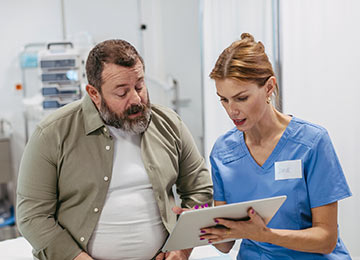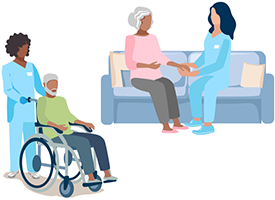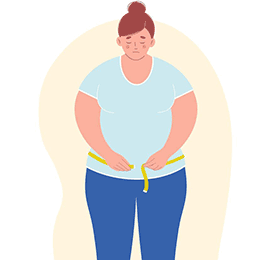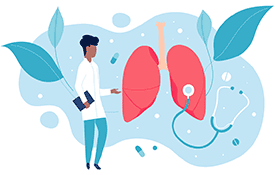
There are many different factors that can make it more likely for you to develop a hernia or for your previously repaired hernia to come back (recur).
At Hernia Clinic Hampshire, we believe it is important to keep you informed about these factors and what you can do to help lower the risk of recurrence.
Some of these factors raise the risk of a hernia forming by making the quality of your connective tissue worse.
To understand this, it is important to understand the structure of collagen. Collagen is the main structural protein in connective tissue. It lies in parallel fibres which can be forced apart if pressure is applied to them.
To prevent the parallel fibres from being forced apart, they have di-sulphide cross-linking bridges. The parallel fibres also have another protein woven into them called elastin. Elastin allows the collagen to stretch and recoil with pressure and movement.

Smoking reduces the amount of collagen we have in tissues. This makes tissues thinner, with less elastin and di-sulphide bridges (so they are weaker) making it easier to push collagen fibres apart.

Old age sees the same effect. Natural wear and tear can make natural anatomical weaknesses bigger, so hernias are more likely to occur as we get older.

Some drugs can alter the structure of connective tissue. For example, steroids reduce the amount of collagen we replace as our tissues are recycled.
Some of these factors raise the risk of a hernia forming by increasing the pressure applied to the abdominal wall:

The lower abdomen provides support to the abdominal contents. The more fatty tissue there is in the abdomen, the more pressure there is against our abdominal wall. In addition to this, excess fat deposits in tissues can weaken the connective tissue by essentially “diluting” the structural proteins described above with fat that has no strength.
Whether you are more prone to developing an apple body shape or a pear body shape alters how being overweight can cause a hernia.
Apple body shapes deposit fatty tissue inside their abdomen which increases pressure against the abdominal wall. This pressure is countered when you use your abdominal muscles to do everyday activities such as walking or getting out of a bed or a chair. These muscles pull against fixed natural weak areas which can make the natural weak areas prone to hernias. The greater your intra-abdominal pressure is, the greater this effect.
The more obese someone is, the more effort is required to lift one’s lungs while breathing. This causes the abdominal muscles to tire quicker and the fixed natural weak areas of the abdominal wall get pulled, creating hernias. This allows the intra-abdominal content to exert more pressure against the weakest areas. This is how pear body shapes develop hernias.
The more overweight a person is, the more they combine apple and pear body shapes and so make these effects even greater.

The top half of our abdominal wall is needed to aid respiration. This is why using your arms to brace yourself when short of breath helps your breathing. You are using your abdominal wall and shoulders to aid respiration.
Because of this, poorly controlled respiratory disease affects our risk of developing a hernia. The more easily we become short of breath, the more effort is required during breathing. As described above, this causes the muscles to tire more quickly and can put increased pressure on the weak areas of the abdominal wall.
Both obesity and poorly controlled respiratory disease put more tension on a hernia repair, increasing the risk of recurrence in the first 6-12 months.

Poor glucose control, over time, alters the rate at which we replace tissue, making it ‘age’ quicker.
Poor glucose control also increases the risk of wound complications after hernia repair, such as wound infection. These wound complications have been shown to increase the risk of recurrence. The more normal our average blood sugars are, the less this happens.
For this reason, the national guidelines state that elective surgery such as hernia repair should not be offered until the HbA1c is less than 69.
Some risks can be eliminated, some risks can only be modified and others cannot be changed.
It is important to give each attempt the best chance of success. At Hernia Clinic Hampshire this philosophy is key to the advice we offer.